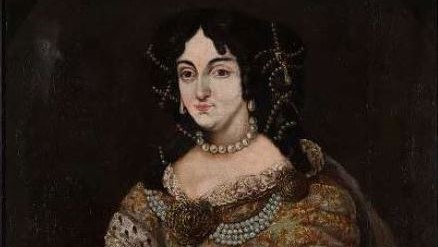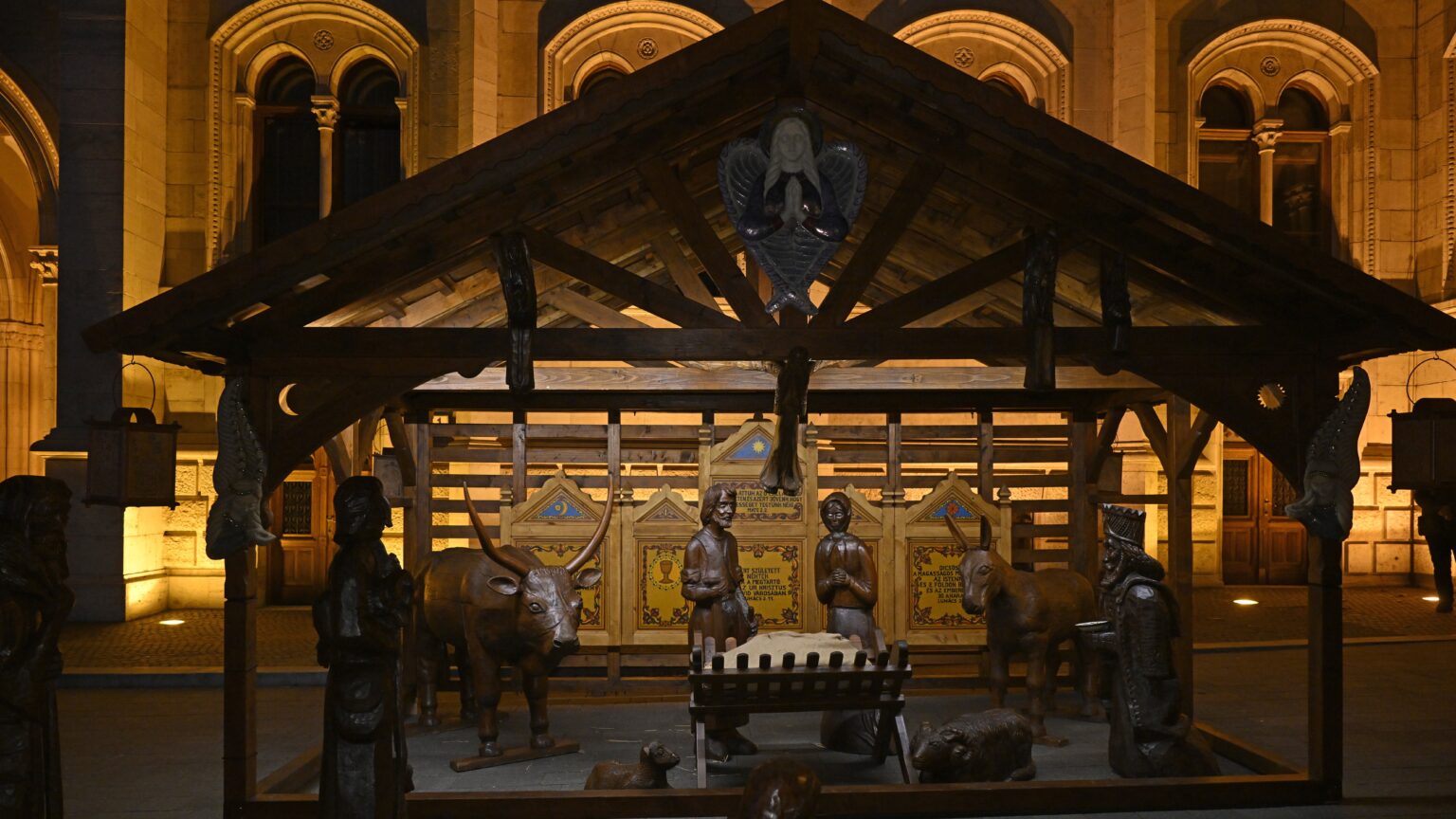
The Nyíregyháza Zoo has achieved a major milestone in wildlife conservation with the birth of twin Sumatran tiger cubs. This critically endangered species, with only 400–500 individuals left in the wild, marks a triumph in a decade-long breeding programme.

Researchers at the University of Szeged’s Albert Szent-Györgyi Medical School are pioneering the development of technologies for the diagnosis and treatment of respiratory diseases. Among other projects they are working on a new, portable respiratory function measuring device, also suitable for home use, for the diagnosis of respiratory diseases.

Hungary’s Defence Minister Kristóf Szalay-Bobrovniczky introduced a groundbreaking sport reality series co-created by the Ministry of Defence and TV2 at a recent press conference. The television show will offer viewers an inside look at military training, personal challenges, and the transformative power of camaraderie.

The Texhibition celebrates its tenth anniversary with a rich programme showcasing Polish textile art, music-inspired creations, and a retrospective of a decade’s achievements. The exhibition runs at Budapest’s FUGA from today until 19 January .

Katinka Hosszú, Hungary’s ‘Iron Lady’ and three-time Olympic swimming champion, announced her retirement at age 35. Reflecting on an extraordinary 30-year career, she shared her journey’s highlights and the lessons learned from her life in the pool on social media.

Companies in the hospitality industry can now apply to the Hungarian Tourism Agency’s Priority Partners programme, organized by Visit Hungary. Successful applicants will receive valuable perks, such as a 50 per cent discount on the application fee for tourism sales programmes run by Visit Hungary; and participation in B2B activities such as webinars, roadshows, and workshops. Applications are open until 27 January.

A recent survey by the Mária Kopp Institute reveals widespread public support for Hungary’s new economic action plan. Policies like housing assistance, a permanent 13th month pension, and doubled family tax benefits are seen as vital by the majority of respondents.

A video shared by American journalist Colin Rugg on X has gone viral, showing a stray being the first to rush across the Hungarian-Romanian border at an event celebrating the full incorporation of Romania into the Schengen Area on 1 January 2025. Romania and Bulgaria became the full members of the Schengen Area under the Hungarian presidency of the Council of the EU.

A recent study by Hungary’s National Media and Infocommunications Authority (NMHH) highlights the influence of media, tabloids, and women’s magazines on shaping unrealistic body image expectations for women. The findings reveal troubling trends in content and visual representation.

Donald Trump and Grover Cleveland are the only two presidents in US history to have been elected to non-consecutive second terms. However, as it turns out, it is not the only thing the two statesmen serving in the highest office in the land have in common.

Hungary’s largest career and education event, the EDUCATIO International Exhibition, opens this Thursday, offering students inspiring university exhibits, scholarship programmes, and career opportunities.

In 2024, over 50 films supported by Hungary’s National Film Institute debuted, including 13 in cinemas and more than 40 on television. The NFI-sponsored productions attracted over 575,000 viewers in film theatres.

To celebrate the reopening of the Hangdóm, Hungary’s House of Music is hosting an audiovisual festival from 14 to 19 January. Featuring premieres, returning favourites, and artist discussions, the programme showcases cutting-edge 360-degree films and installations.

Five-time Olympic gold medalist gymnast and Holocaust survivor Ágnes Keleti was the oldest living Olympic champion in the world. She was awarded the Athlete of the Nation honour by the Hungarian government in 2004. She sadly passed away at the age of 103 on Thursday, just a week before her birthday.

President Trump, after overcoming multiple indictments, one conviction, and two assassination attempts, completed the Great American Comeback story and won the 2024 US presidential election, becoming the 45th and 47th President of the United States. He also delivered the first popular vote victory for the Republican Party in a presidential election since 2004.

The restaurant, established in the 1860s, was taken over In 1910 by János Gundel, a German immigrant from Bavaria, who gave the restaurant the name it is known by today.

Ilona Zrínyi, a noblewoman hailing from a Croatian–Hungarian aristocratic family, is one of the most defining female figures in Hungarian history. An uncompromising patriot and fearless leader, the Countess defended the castle of Munkács (Mukachevo) for three years against the Habsburg forces. Although she died in exile in Turkey in 1703, she was reburied alongside her freedom fighter son, Ferenc II Rákóczi in Kassa (Košice, Slovakia) in 1906.

‘The failed revolutionary upheavals in 1848 would see thousands of Central Europeans go into exile in Britain. One of the most famous of these was Hungarian national hero Lajos Kossuth, who travelled extensively in the United States before moving to London, to live there for most of the 1850s. In America, Kossuth was received at the White House twice by President Millard Fillmore, and was generally feted and celebrated everywhere he went.’

‘The memory of the martyrs of Christmas invites us to recognize that the season is not only about joy and blessings but also about sacrifice and steadfastness. These saints and unnamed heroes, who gave their lives for Christ, teach us that true love is never easy. Yet, through sacrifice, we partake in the light that Christ’s birth brought into the world.’

‘In few countries was the period of 19th century national revival more productive than post-Compromise Hungary, where the national-cultural revival was accompanied by a period of economic prosperity and renewed political prominence. And, within Hungary, no other building complex captures the spirit of this era, and its intertwining of the aesthetic, the historical, and the political, as the Buda Castle.’

Much like in many European countries, marzipan enjoys a great popularity in Hungary, too. Marzipan first attained admiration in the Hungarian Kingdom under the rule of the Renaissance king, Matthias Corvinus. According to historic records, a chessboard from brown and white marzipan was the eighth course on King Matthias’ wedding with Beatrice of Naples in 1477.

With the Continental Army in dire straits, Commander in Chief George Washington knew he had to do something special to change the tide of the War of Independence at the end of 1776. So, he decided to strike the enemy when they least expected it: he crossed the icy Delaware River to get to the Hessian mercenaries stationed in Trenton on Christmas Day.

‘Lucifer certainly did not want to be God, for he was intelligent enough to know that he was not of the same substance of our Creator, but he wanted to be or rule like God. Envious of God, he thus submitted to his pride and rebelled against the Almighty—a temptation that at times can be appealing during our worst moments.’

‘In 1914, a simple chanting of a Christmas carol brought bitter enemies together, as if they had always been united. In a sense, they were united through Christ, Who made them see each that they could live in harmony. Could that happen today?’

Christmas and the winter holiday have always had special significance in Hungary, even in Socialist times. We have collected some fun facts for you related to Hungarian Christmases through time—enjoy!

Hanukkah, the eight-day Jewish Festival of Lights, commemorates the rededication of the Temple in Jerusalem in the second century after it was liberated. This year’s Hanukkah will start on 25 December and end on 2 January 2025.

The high-profile clash between Tottenham Hotspur and Liverpool ended in a scoreline very dear to Hungarian football fans, 3–6, to Liverpool. Hungary captain Dominik Szoboszlai scored a goal and made an assist during the victory solidifying the Reds’ place on top of the Premier League table for Christmas.

On 29 December Duna Television will premiere the acclaimed Hungarian film Semmelweis. The most-watched Hungarian production of 2023 portrays the heroic efforts of Ignác Semmelweis, known as the saviour of mothers, as he makes a groundbreaking medical discovery.

Christmas traditions were our ancestors’ way of ensuring the coming year’s success and their families’ health. Magyar Krónika has listed some of the old Hungarian festive customs.

Urban Verbunk is an all-male dance troupe founded in 2018. Its leader, Ahmed Moussa, spoke with Hungarian Conservative to explain the philosophy and the passion behind their ‘urban folk’ project that popularizes Hungarian culture across countries and continents.